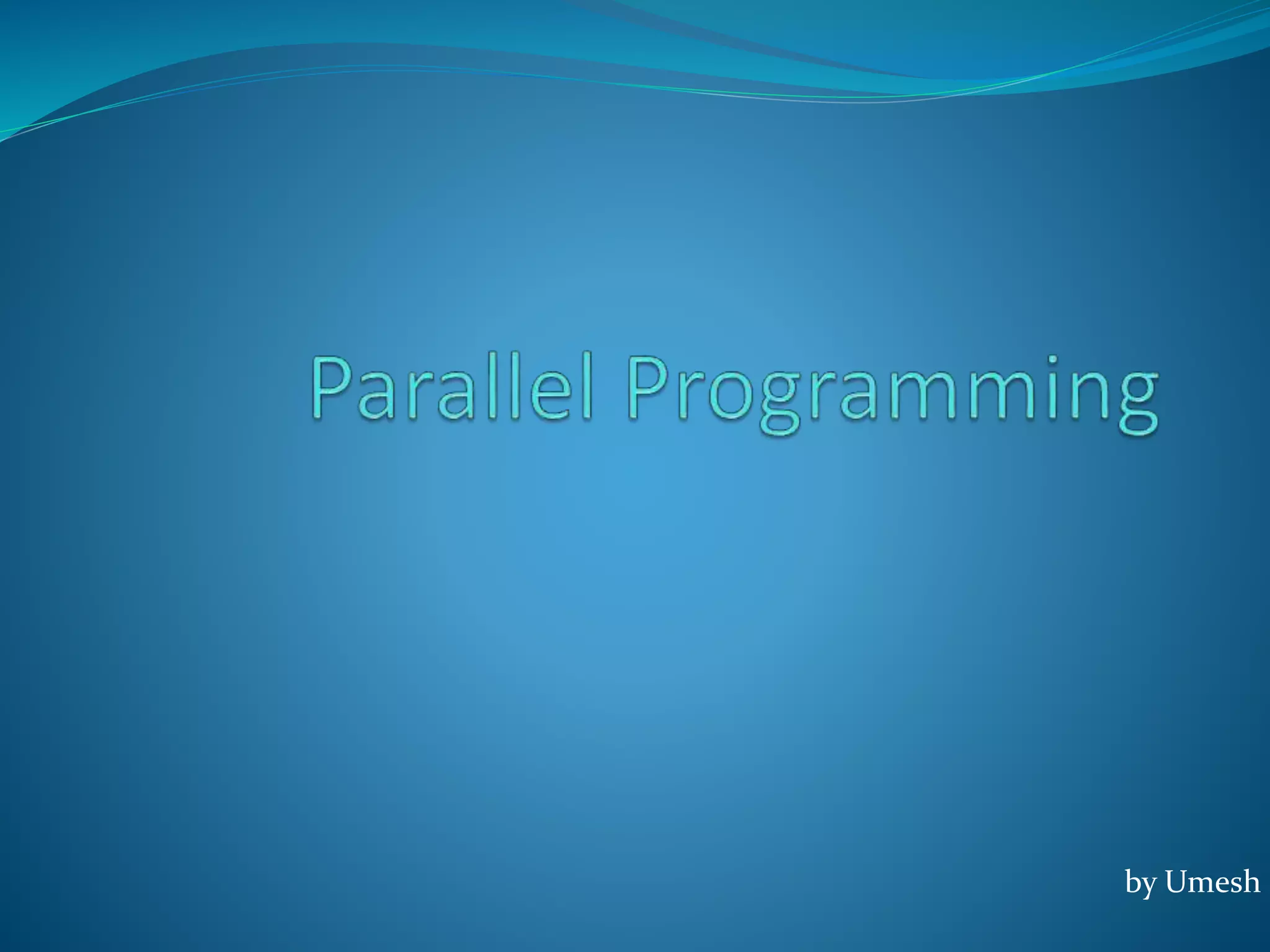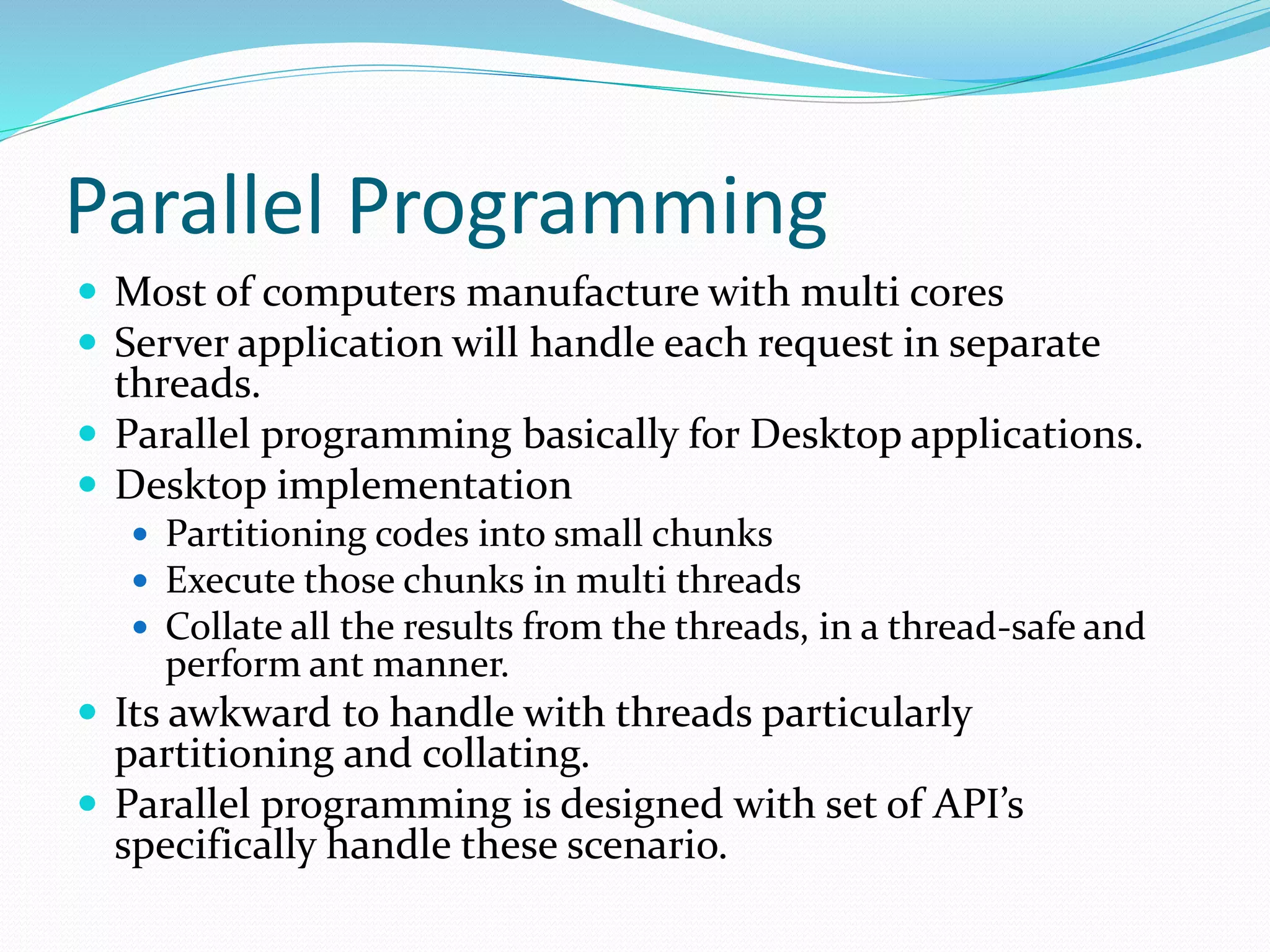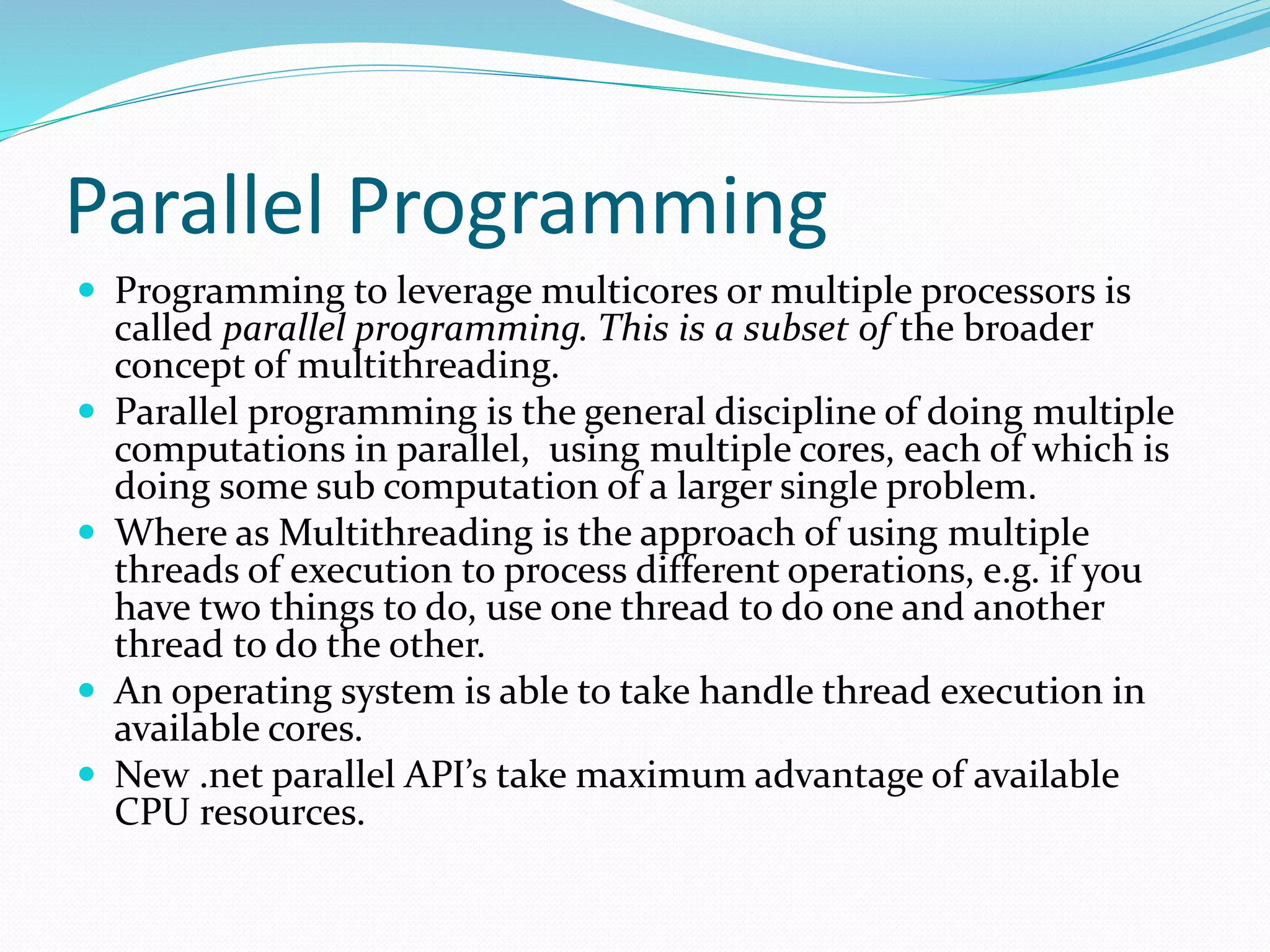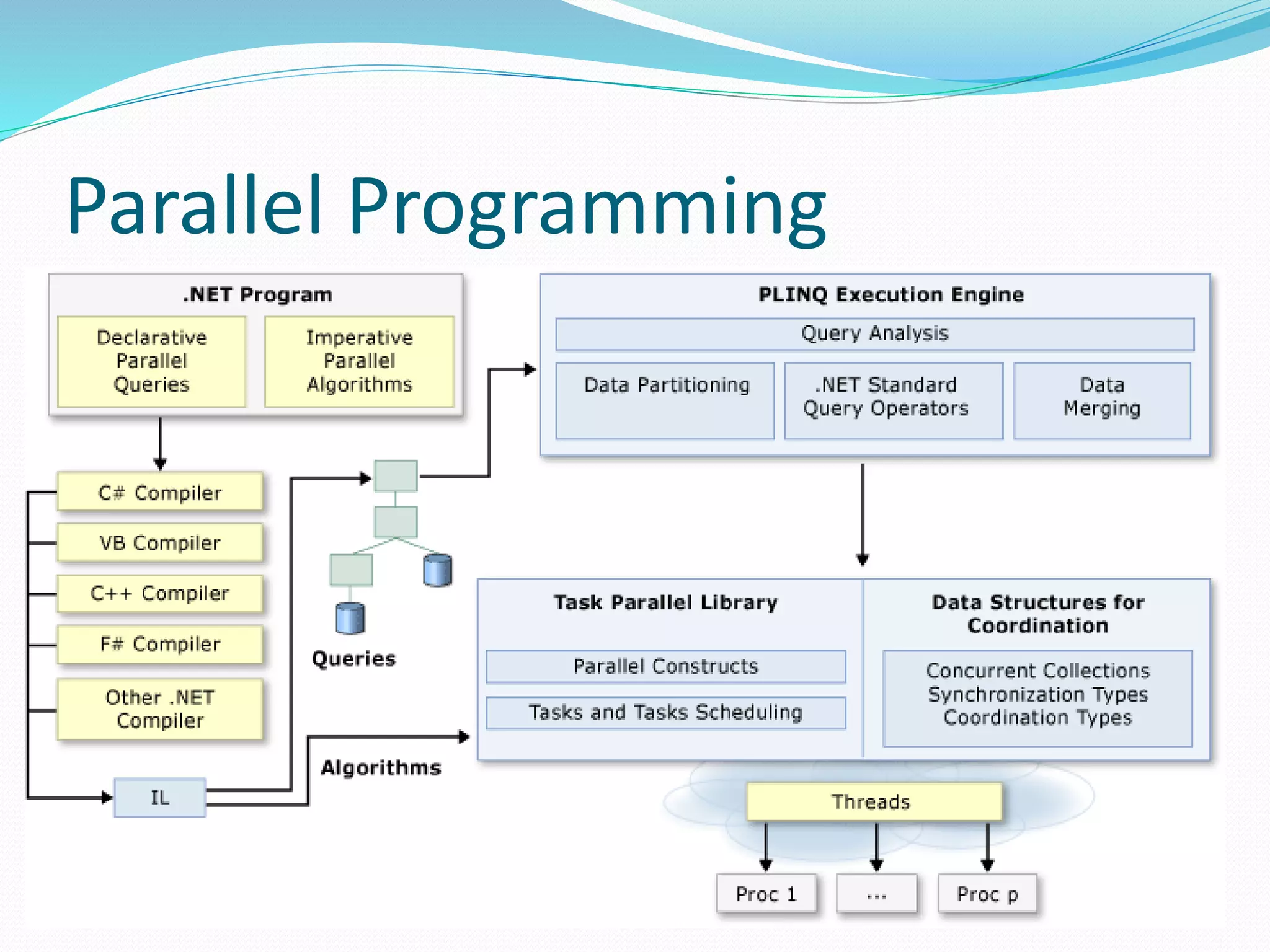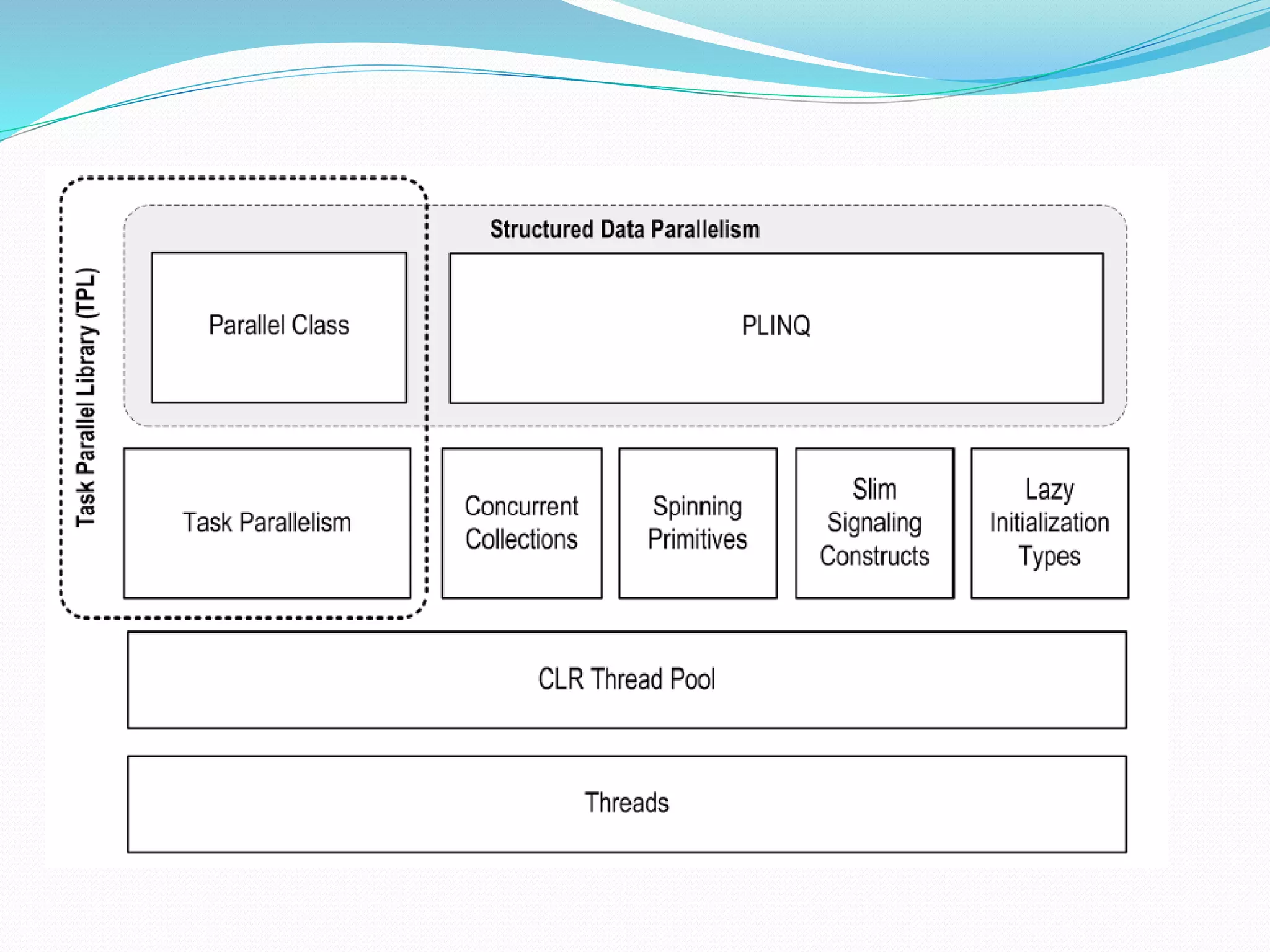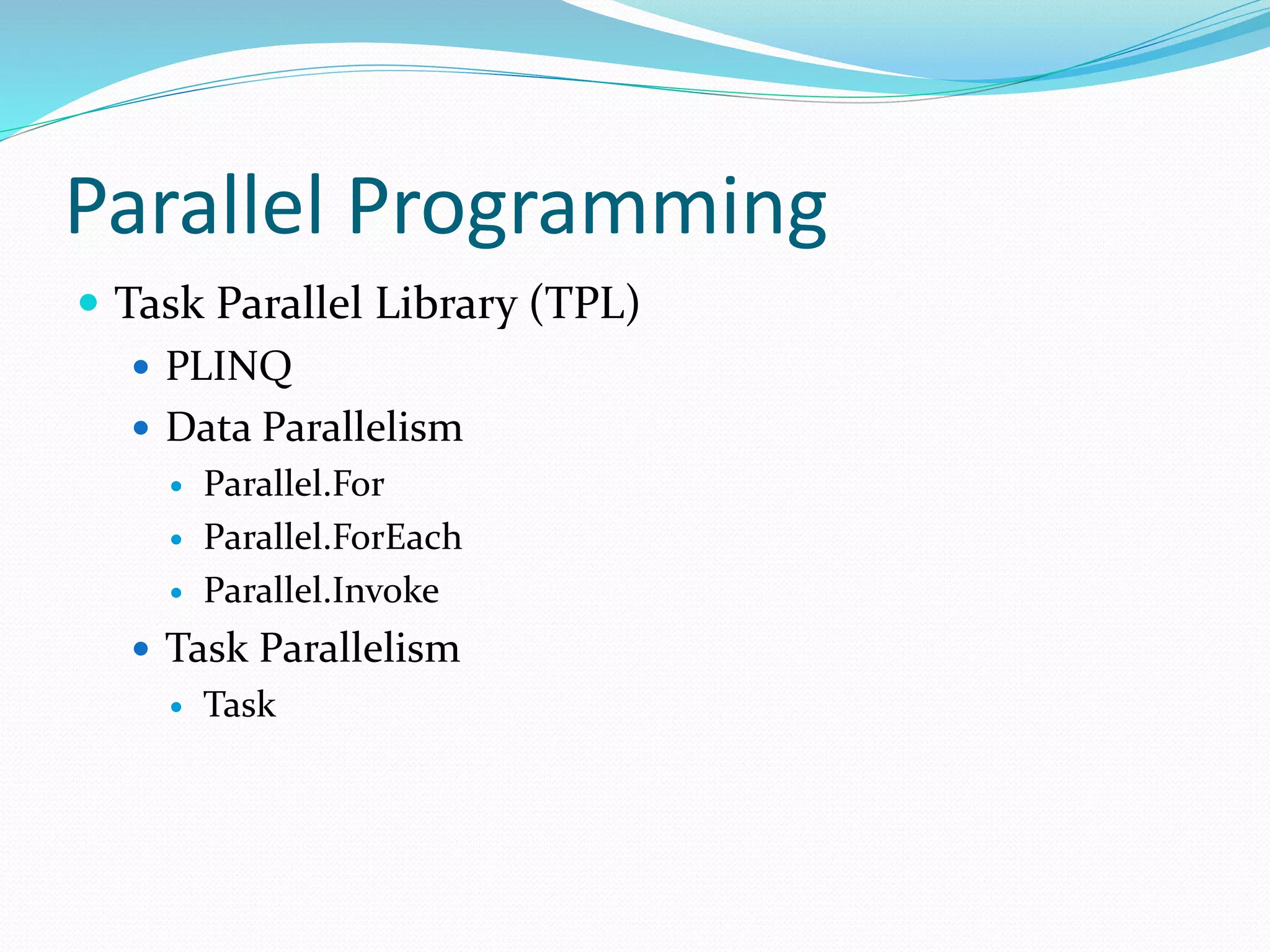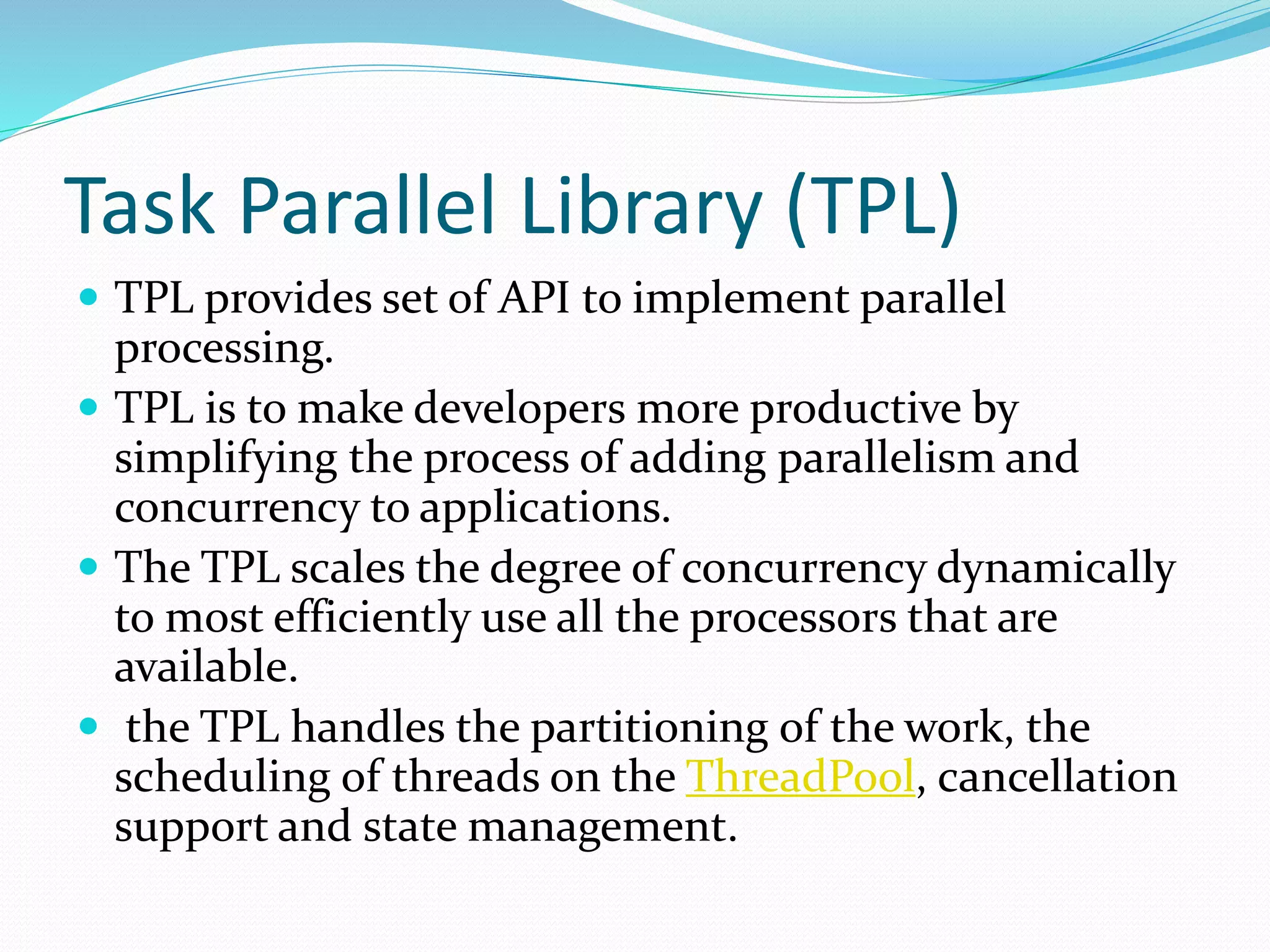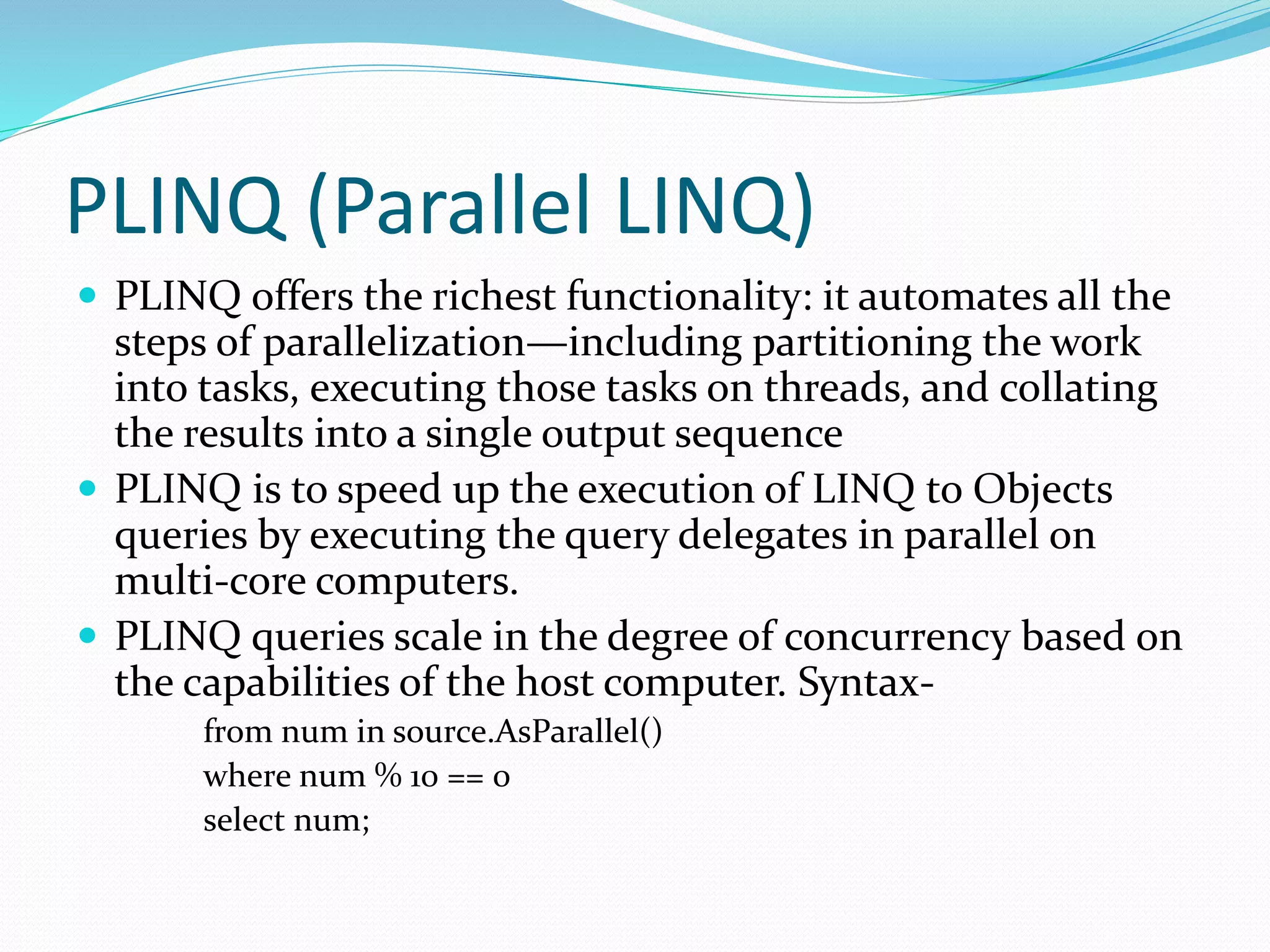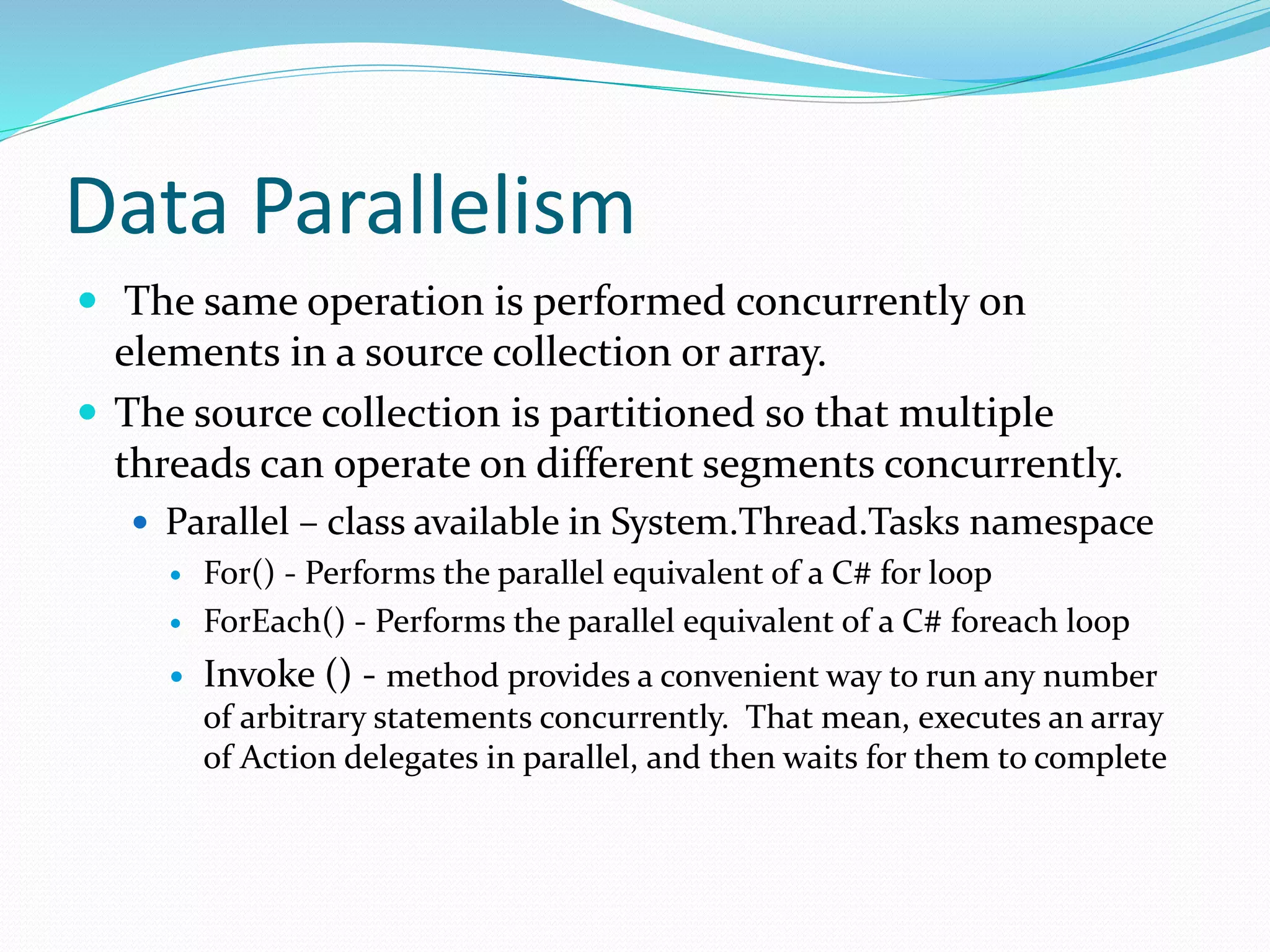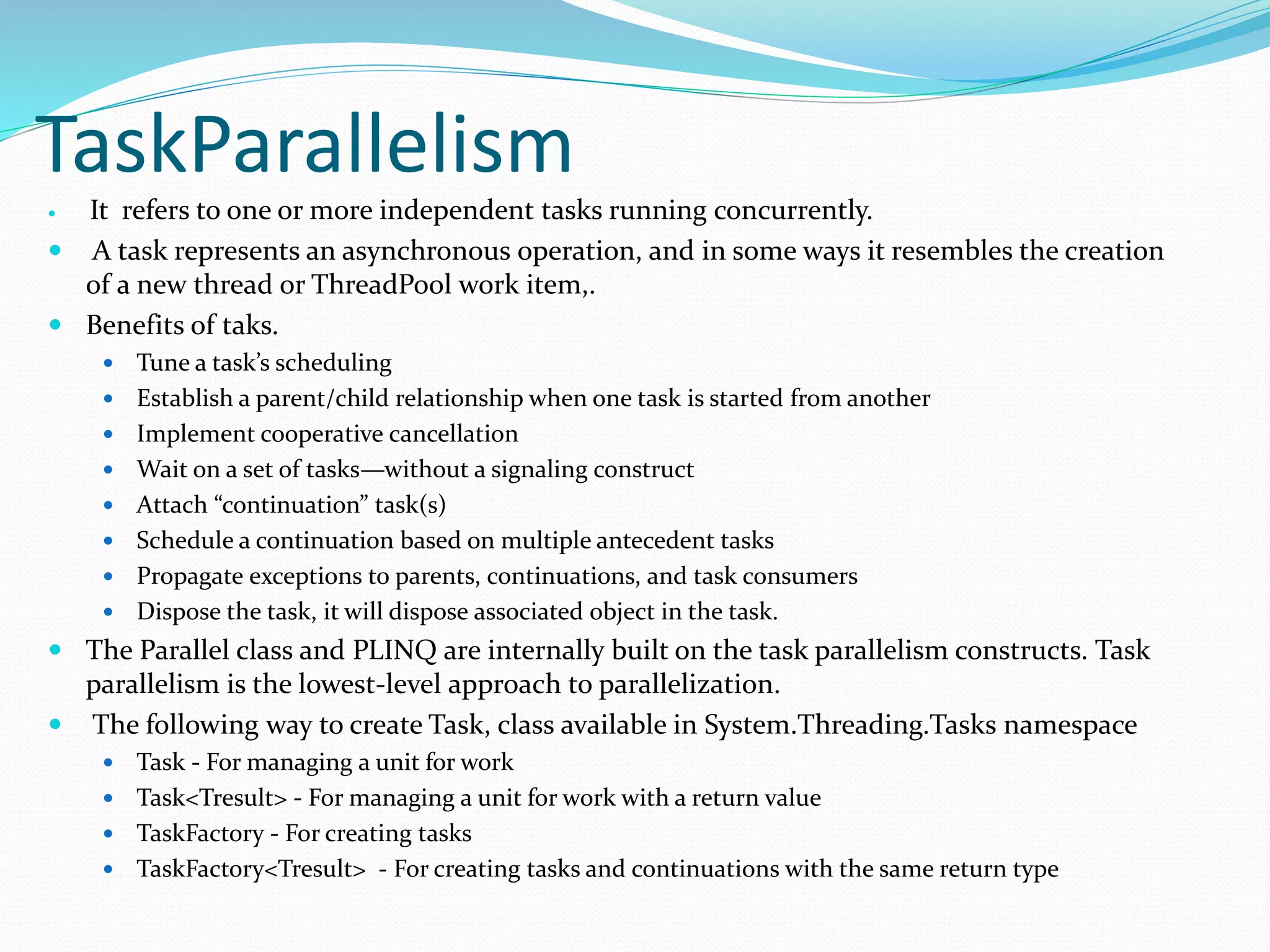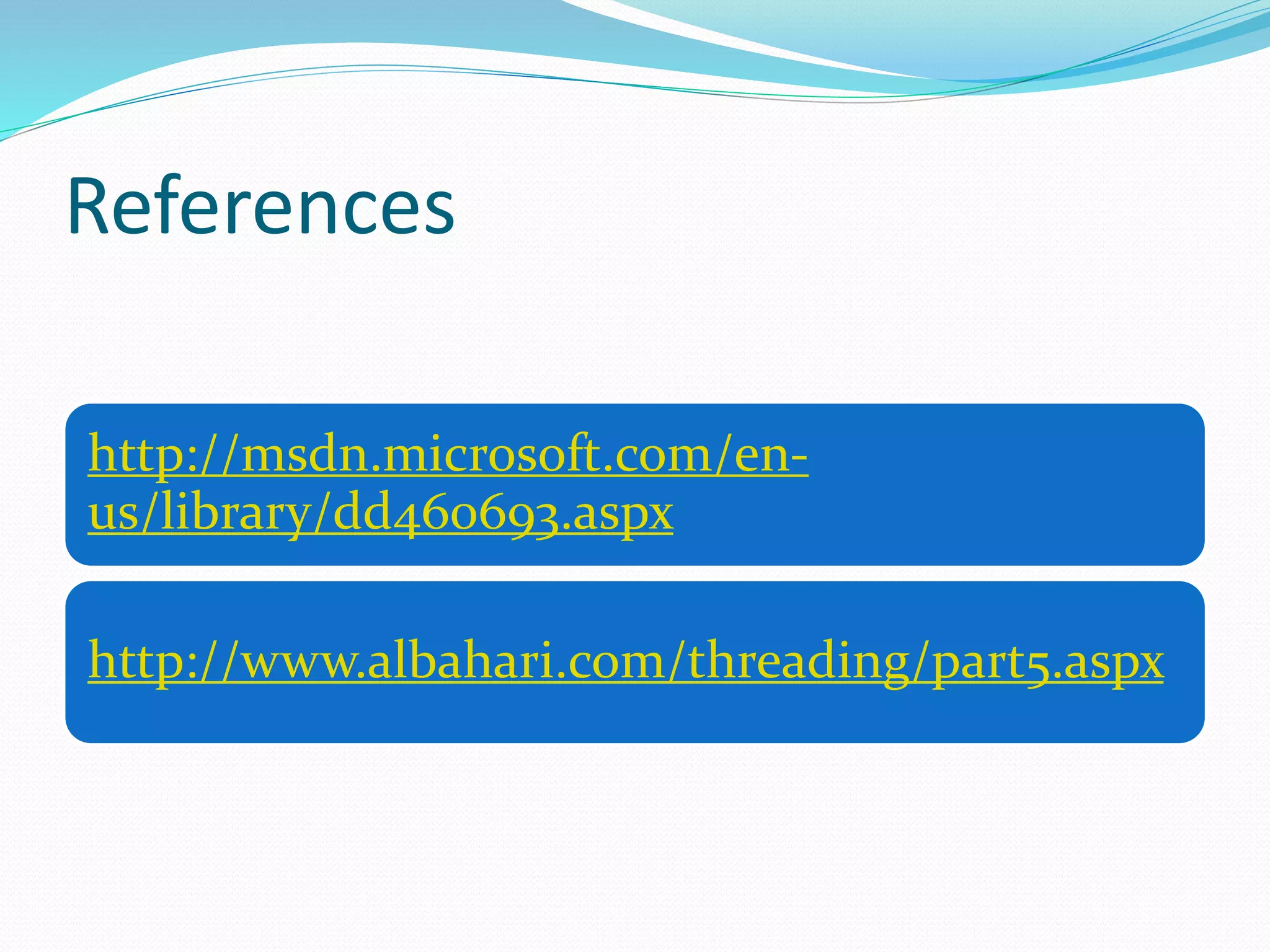This document discusses parallel programming and some common approaches used in .NET. It explains that parallel programming involves partitioning work into chunks that can execute concurrently on multiple threads or processor cores. It then describes several common .NET APIs for parallel programming: the Task Parallel Library (TPL) for general parallelism, PLINQ for parallel LINQ queries, Parallel class methods for data parallelism, and lower-level task parallelism using the Task class.
